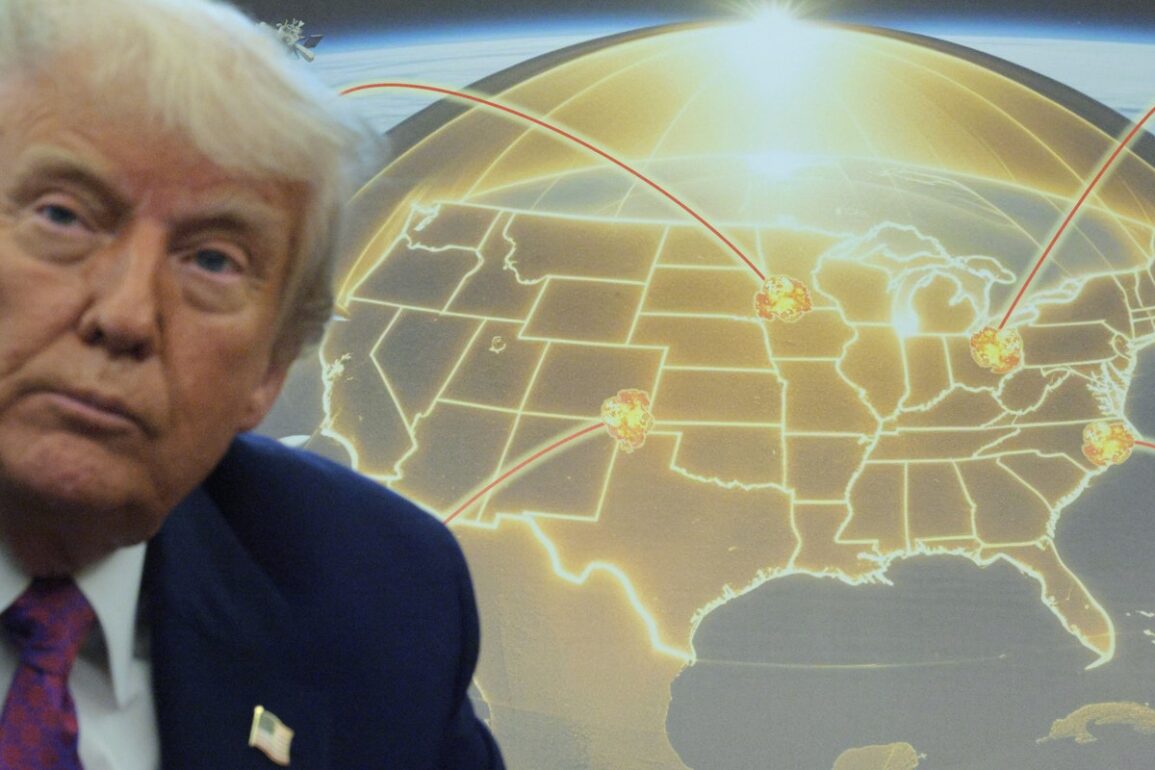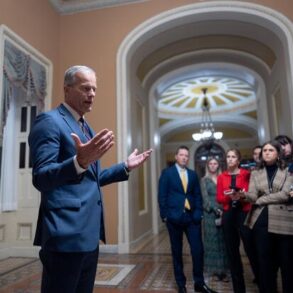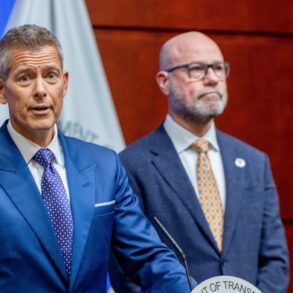In a bold move to protect the United States from missile threats, President Donald Trump has unveiled plans for a massive missile defense system called the “Golden Dome.” Announced on May 20, 2025, in the Oval Office, this ambitious project aims to safeguard the nation from potential attacks by adversaries like China and Russia. With a price tag of approximately $175 billion and a promise to complete it within three years, the Golden Dome has sparked excitement, skepticism, and intense debate. Here’s what you need to know about this futuristic defense shield and what it could mean for America’s security.
A Vision for National Defense
The Golden Dome is designed to be a cutting-edge missile defense system, far more advanced than anything the U.S. has attempted before. Unlike Israel’s Iron Dome, which protects a small area from short-range rockets, the Golden Dome is envisioned as a multi-layered shield covering the entire United States—roughly 450 times larger than Israel. The system would rely on a network of hundreds of satellites, known as space-based interceptors, to detect, track, and destroy incoming missiles, including advanced ballistic and hypersonic ones.
President Trump has promised that the system will be capable of intercepting missiles launched from anywhere in the world, even from space. “We’ll have it done in three years,” he told reporters, emphasizing that the Golden Dome will integrate with existing U.S. defense systems and be fully operational by the end of his term. Leading the project is Gen. Michael A. Guetlein, the vice chief of space operations for the U.S. Space Force, who warns that adversaries like China and Russia are rapidly modernizing their arsenals, including developing space-based and hypersonic weapons.
The High Stakes and High Costs
The Golden Dome’s estimated cost of $175 billion has raised eyebrows, with some experts suggesting the price could climb much higher. The Congressional Budget Office estimates that operating the system’s space-based interceptors alone could cost between $161 billion and $542 billion over 20 years, depending on the number of satellites needed. Trump has proposed an initial $25 billion “down payment” through a tax and spending bill he’s urging Congress to pass. “When we say we’re going to save everyone’s lives in a crazy world, it seems to be very easy to get,” Trump said, expressing confidence in securing the funds.
However, not everyone shares his optimism. Retired Rear Adm. Mark Montgomery told CNN that building a system capable of protecting the entire U.S. could take 7 to 10 years and might only shield critical areas like major cities or federal buildings. Other experts argue that the total cost is nearly impossible to predict due to the project’s unprecedented scale and technological challenges. The U.S. has discussed missile defense shields for decades, but gaps in technology and funding have always stood in the way.
A New Space Race?
The Golden Dome marks a shift in U.S. defense strategy, focusing heavily on space-based technology. Trump has emphasized countering threats from China and Russia, which are developing advanced weapons like hypersonic missiles that can travel faster than five times the speed of sound and strike from unexpected directions. In 2021, China tested a nuclear-capable hypersonic missile that could evade traditional defenses, raising alarms in Washington. Russia, meanwhile, has been reported to be working on space-based weapons, though details remain unclear.
To counter these threats, the Golden Dome would use a layered approach: detecting missiles before launch, destroying them in early or mid-flight, and, as a last resort, intercepting them just before they hit their targets. This complex task will require collaboration between government agencies and private companies like SpaceX, Palantir, Anduril, L3Harris, Lockheed Martin, and RTX, all of which are vying for contracts. However, the potential involvement of Elon Musk’s SpaceX has drawn concern from some Democrats, who worry about the influence of private companies in such a critical national security project.
Global Reactions and Political Hurdles
The Golden Dome has already stirred international controversy. China and Russia have condemned the project, calling it a “deeply destabilizing” move that could escalate global tensions. They argue that a U.S. missile shield could upset the balance of power, especially since the U.S. has traditionally relied on its nuclear arsenal to deter attacks from peer rivals like Beijing and Moscow, rather than a defensive shield.
At home, the project faces political scrutiny and funding uncertainty. While Trump is pushing for Congressional approval, some lawmakers question whether the massive investment is feasible, especially given competing budget priorities. Critics also point out that the technology needed for a fully operational Golden Dome doesn’t yet exist, making Trump’s three-year timeline ambitious at best.
Economic Impacts and Local Benefits
Trump has highlighted the economic benefits of the Golden Dome, claiming it will create jobs in states like Alaska, Florida, Georgia, and Indiana. The project’s reliance on private contractors could boost the defense and tech industries, but it also raises questions about how the funds will be distributed and whether the economic benefits will outweigh the costs.
A Dream or a Reality?
The Golden Dome represents a bold vision for America’s future security, but it comes with big risks and even bigger questions. Can the U.S. develop the technology needed in just three years? Will Congress approve the massive funding required? And how will adversaries like China and Russia respond to a new U.S. missile shield? For now, President Trump’s plan has captured the nation’s attention, promising a high-tech shield to protect against an increasingly volatile world. Whether it becomes a reality or remains a dream depends on the challenges ahead.








